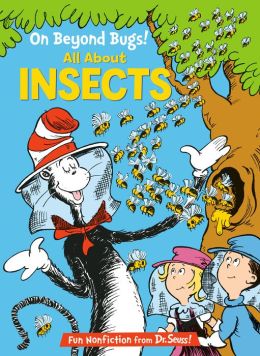In this post, I'm taking a break from the science and jumping on the allergy advocacy band "wagon" (any 80's children may recognize my attempts at pun, playing off the beloved game, Oregon Trail - ha!). I, in no way, consider myself well-versed in this endeavor, but because it is THAT important to me, here is my attempt to get you on the allergy advocacy bandwagon, too (come on, I want to see all of us successfully reach the end of the Oregon Trail, which happens to be the good 'ole Willamette Valley)! In all seriousness though, many states have passed or are currently in the midst of legislation for stock epinephrine and their associated guidelines in schools. What this means is that all schools, by law, would have on hand, unassigned epinephrine auto-injectors in the event of a life-threatening, anaphylactic allergic reaction.
Why is this important?
It will save lives. Currently, the best medication capable of counteracting anaphylaxis is injectable epinephrine. For those of us well-versed in living with the threat of life-threatening allergies, we carry epinephrine auto-injectors wherever we go. A trip to the grocery store - yup, got our epinephrine. Short walk in the neighborhood on a lovely spring day - epinephrine is along for a stroll. Anaphylaxis can happen in minutes, and time is of the essence in order to stop anaphylaxis. Full recovery from these reactions is associated with receiving epinephrine as soon as anaphylaxis is recognized. Fatalities from anaphylaxis occur most often when epinephrine was not administered or it was administered too late. What this means practically is that if a reaction happens at school, waiting for emergency responders to arrive in order to administer epinephrine may be too late to reverse the reaction.
For schools, it means that epinephrine must be readily available if and when a reaction occurs. In addition, there must be several school staff capable of administering epinephrine (not just the school nurse, but teachers, cafeteria monitors, bus drivers, etc.). Not only will this protect children with known food allergies, but it will protect children with unrealized allergies whether it is a bee sting on the playground or a food in the school cafeteria at lunch (yes, food allergies can develop at any time without warning, even to
foods that have previously been consumed without incident!).
The thing is, just having unassigned epinephrine in schools does not go far enough. There are so many considerations of how this actually gets implemented - the "guidelines" or rules and regulations, if you will. Not only are the guidelines important for how schools handle stock epinephrine, but they are critical for those children who have prescribed epinephrine. By many personal accounts, how prescribed epinephrine is handled in schools has often been left to the discretion of the schools. On the ground, this means that often times, a child's auto-injector may be locked away in a drawer in the nurse's office, where other prescribed medications are located. However, is this really the best place if a life threatening reaction happens on a playground? What if the nurse is away and unfamiliar faculty/staff are left fumbling for keys to unlock a drawer? Guidelines for where prescribed epinephrine is located (e.g. on the child or in his/her classroom) and who can administer without fear of repercussions (good samaritan laws) would eliminate confusion, angst, and worry for everyone - parents, teachers, nurses, principals, administrators, children ...
What is happening in Oregon?
I'm happy to report that two bills are currently in the works.
SB611 - Allows access to unassigned epinephrine auto-injectors in schools and directs the State Board of Education (SBE) to establish rules and guidelines that schools must follow for using unassigned epinephrine. It will also have the SBE establish rules and guidelines for students known to have life-threatening food allergies.
(As of 4/16/13 - passed the Senate. House needs to vote yet)
HB2749 - Requires that school district boards allow certain medications, such as epinephrine auto-injectors, be kept in a student's classrooms if requested by a parent/guardian. It also mandates that a certain number of individuals in a school must be trained to administer epinephrine.
(As of 4/16/13 - still in committee, has not been voted on yet).
If you live in Oregon, take action!
These bills are still in progress. If you support these bills, contact your state representative and state senator as soon as possible (Link to find out who they are, if you do not know). In addition, you may directly email/phone the
members on the house education committee (HB2749, since it is still in committee and has not been up for vote yet). Just as a note, I am super impressed with committee chair,
Representative Sara Gesler! She sent me a direct message within hours of my email, filling me in on the status of HB2749! Thank you, Rep Gesler!
Our work is not done - questions remain
These bills are a step in the right direction. Major questions/concerns that I have surround SB611. Based on the wording, I interpret it to mean that schools may choose to get unassigned epinephrine, but it is not a required by law? In addition, the guidelines surrounding epinephrine and how life-threatening food allergies are handled are not written into law per se, but are left up to the State Board of Education to decide. If this bill passes, what will those rules be? How can as many voices be heard when the SBE drafts these rules and guidelines? Presumably if HB2749 passes, then that law would be integrated into the SBE guidelines? Please feel free to comment below with your interpretations and what further action we, the allergy community can do to have our government work for us! All-in-all, I'm very optimistic!
Further resources
I am grateful for The Grateful Foodie. She currently is blogging about the in progress work to get stock epinephrine in Nevada schools. I just love how she brings the mysterious governmental processes to life and makes it feel like any of us, no matter who we are, can be advocates!
Thank you AllergyHome for providing a map of where current laws exist! These can be a model for states that do not currently have laws on stock epinephrine.
Allergy and Asthma Foundation of America. Fantastic resources on advocacy by one of the oldest and well-respected non-profit organizations supporting our community.
Put it on the calendar (I am!!): Kids with Food Allergies Foundation is putting on a free webinar (April 30 11-12 pm PST) on getting unassigned epinephrine in schools! I can't wait to hear this because I have a feeling they are going to lay it all down on what should be in legislation and how we can go about making it happen!
Finally: Here is a link to the
letter I drafted a few days ago. Feel free to use it as a guide if you need help getting started with your own letter.
Please know that it does not need to be as detailed or long as mine, but let your personal story be heard and why you think the law should be a certain way. Our state reps and senators will hear you.

















